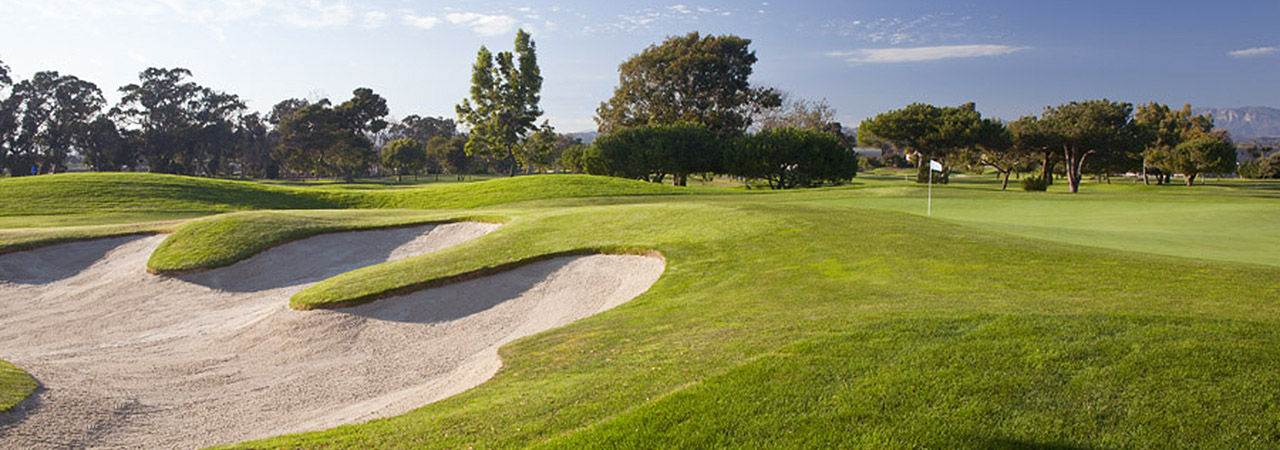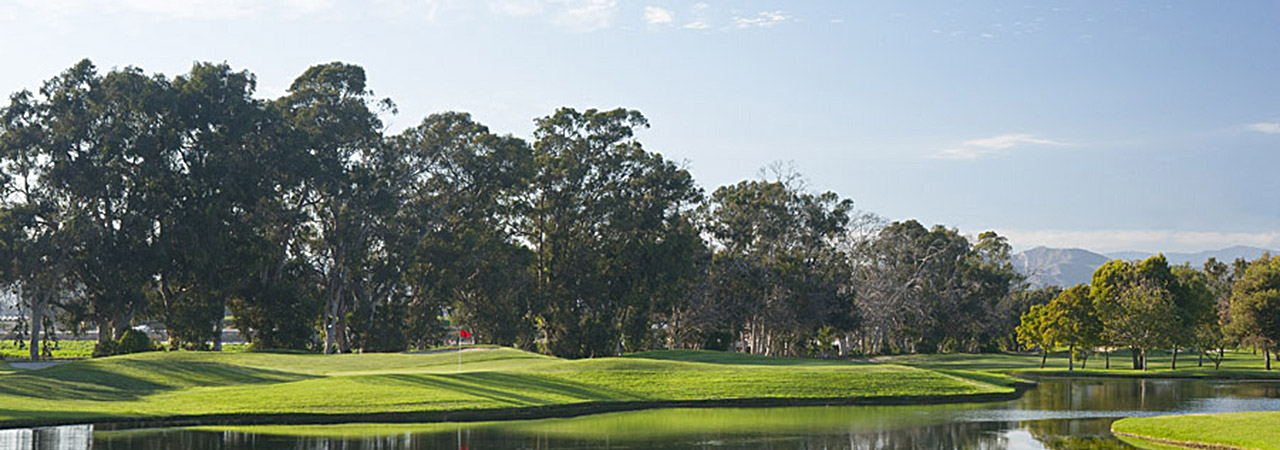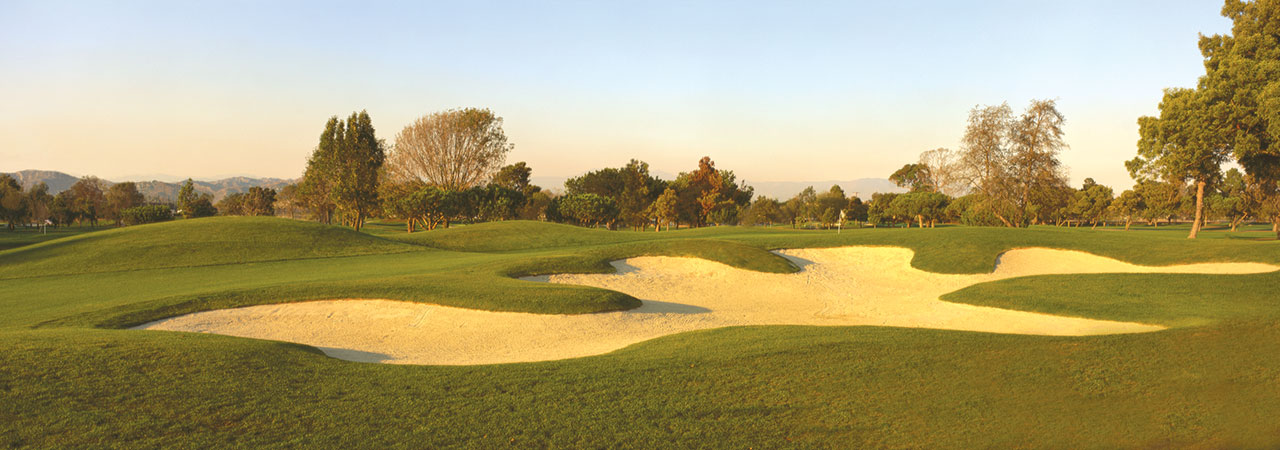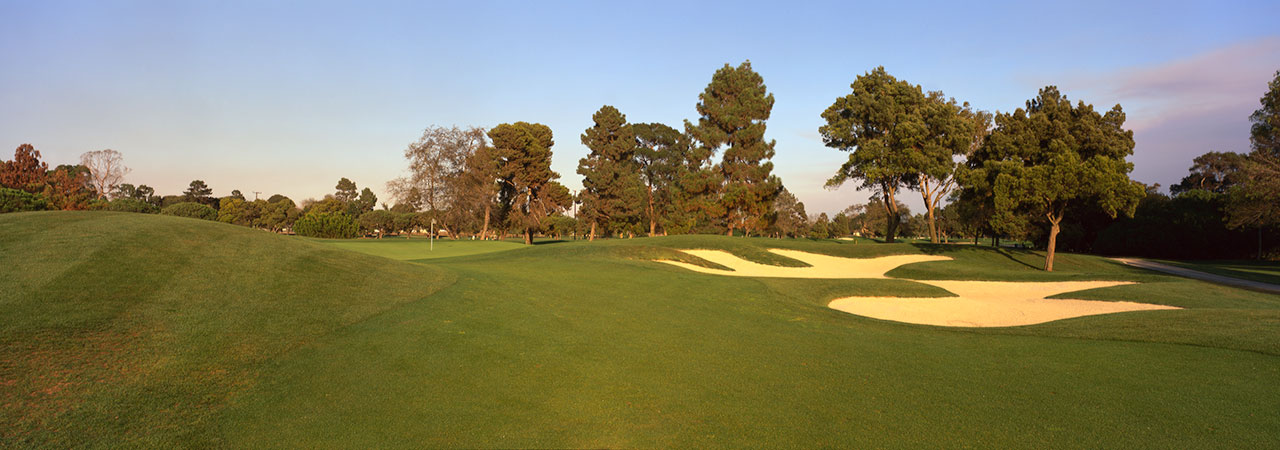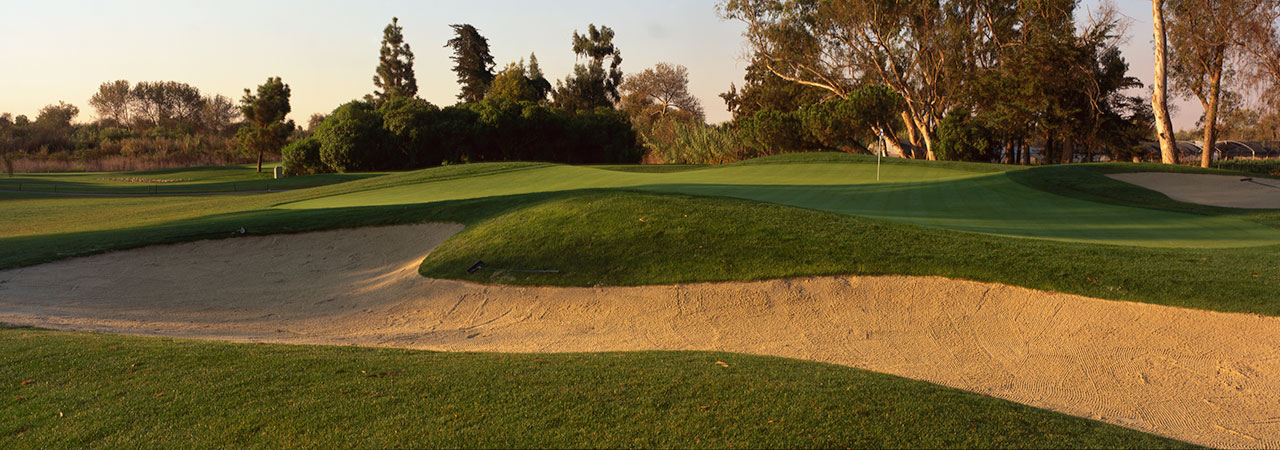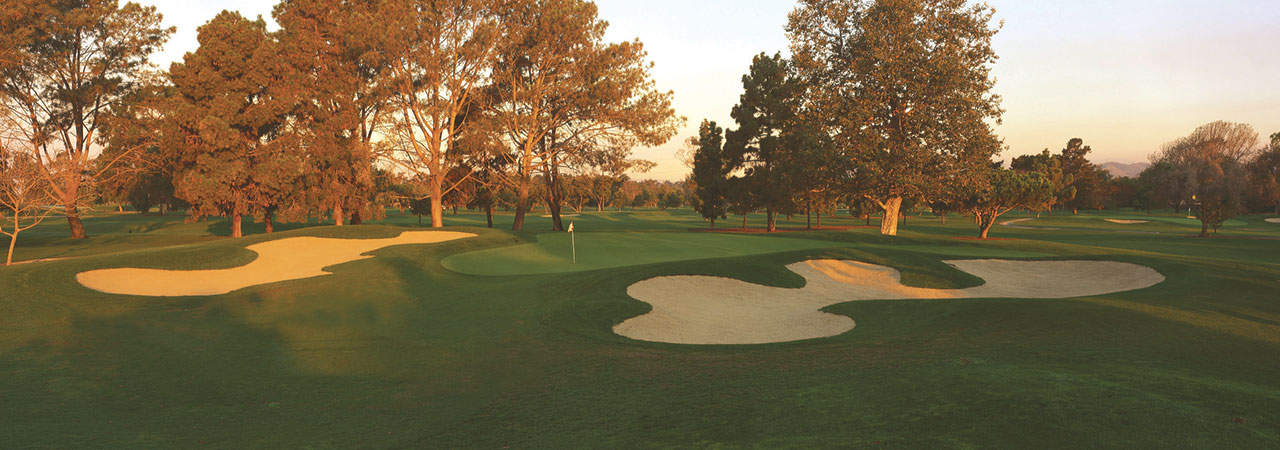Project Description
that requires great precision off the tee without being too penal
for missed shots….A fun walk through a big park
Project Overview
The Buenaventura Golf Course, originally a 9-hole course, was founded in the late 1920s. It is widely held that the original design was based on assistance from the well-known golf architect, William Park Bell, known as “Billy Bell.” Bell was prolific in the Southern California area, having worked closely with George C. Thomas, Jr., golf architect of the famous and renowned Riviera and Bel-Air Country Clubs. Bell was known for his free-formed bunkers with intricate shapes and rugged edges. He was affectionately called “The Bunker Man” by construction crews.
In 1939 a massive flood washed out the lower portion of the Buenaventura course. This necessitated adjustments to the original routing.
Billy Bell, together with his son, William F. Bell, formalized the routing of the golf course in 1949, making significant changes to the original 9-hole layout. This effort established the look and feel of Buenaventura, creating the wonderful tree-lined fairways which today form the western portions of the layout.
In 1958, after land was acquired for expansion to the east, William F. Bell was commissioned to expand the course to an 18-hole layout. This was after the passing of the elder Bell, in 1953. Bell “Jr.” continued the traditional tree-lined design, creating a virtual arboretum within the golf course owned by the growing City of Ventura.
The most recent major modifications by the younger Bell came in 1984 when he created a plan for improvement. Unfortunately, Bell died before the plans were bid, leaving construction work to be performed without his oversight.
The New Renovation
Beginning in 2001, the City of Ventura laid groundwork for overhauling Buenaventura. Golf Course Architect Forrest Richardson, seasoned in the work of both Bells, was brought in to work with the City and the operator of the City’s two golf courses, to create an approach to preservation and improvement. The options were many, but preservation of the Bell style that has endured at Buenaventura for the past 75 years ultimately prevailed. Richardson, working with the City developed plans that took advantage of the great trees and hole corridors created through many years of maturity.
As part of the work, modifications were made to the routing of holes which provided a more efficient and exciting layout for the thousands of citizens who use the course as their home club. Among the considerations were safety, strategy, variety and maintaining a tie to the Bell legacy.
The renovated Buenaventura Golf Club plays just over 6,000-yards to a par of 70. Like many classic era courses, the length is not as important as the strategy and interest associated with the hazards and approaches.
Our effort at Buenaventura was to strike a balance between changes for updating and improving, and the need to preserve and uncover many of the design features that were prevalent in the 1930s. The focus on bunker style led the way. Classic shapes and edges now transform the course as if one is stepping back in time. Gone are the pedestrian “muni” bunkers with shallow bottoms and unappealing looks. The look from tees is now one of intrigue and interest — golfers have choices to play holes, something that had all but been erased from the course as time went by.
The goal was to bring back a spirit of exciting golf. The design team looked at the way holes presented themselves to the golfer at this parkland layout. The outcome of this process was to establish bunkers and hazards that demand choices to be made. This is one of the elements that makes golf fun, having the power to hit shots that beat the course, and also having the element of a gamble that may result in trouble.
Much of what golfers felt and experienced in the 1930s is now back into play. Bunkers, choices off the tee, cross hazards and larger greens are all part of the new experience. During this “Golden Age” of golf course architecture (1910 through the 1930s) there was a formality to the game and a simplicity to courses. The work at Buenaventura was carefully shaped to support this notion — that the golf course is a stately and natural park, almost as if it was discovered by the river and simply turned into a course over time.
Quotes from Forrest Richardson
The 6th is a wild adventure. You can hit anything from 5-iron to full driver off the tee. As a par-4 it sits at only 290-yards, but it can lead to an easy bogey for the bold player who doesn’t pay attention. On the other hand, the shorter hitter will find it relatively painless, providing they play straight and aim.
No. 12 has a most unusual green. We built all the greens to be full of variety and interest. Putting is the great equalizer. Once at the green it doesn’t matter whether you can hit the ball 280-yards or just 160-yards — every-one is on the same level. You can leave a putt of nearly 200-feet here, which I strongly recommend you avoid.
No. 13 is really an original Bell hole. We removed some unhealthy trees which now allows the better trees to grow even stronger. This also allows us to see the hole. Before it had overgrown and it was simply a matter of hitting down a very narrow highway of a fairway. Now you can play to the left around the pond, or take a wider fairway area and deal with the pond at your approach. We also moved the edge of the water to the green. It’s no longer the very short and poor shot that is punished, it’s now the position of the flagstick which will make or break par on this beautiful hole.
No. 16 is a long par-4 with a tricky approach to a water guarded green. At the end of the round it will define scores and change matches. It is the toughest of the holes we completely re-created out of the older holes.
No. 17 is only 100-yards for most tee positions. The green is huge and one can only see the left areas. It’s a mystery of sorts. Here is a hole that on the scorecard looks like a no-brainer, but it tests every nerve in the swing and the mindset of the player. A golfer can play several shots with a wedge or short iron, and this hole will allow that skill to rise to the surface. The massive bunker at No. 17 can make the green look much further away. This deception is part of golf.
Quick Facts
Scope: Planning, Design, Approvals, Bidding, Construction Documents, Construction Observation Services
Course: 18-holes/Par-70/6,100-yards, Short Game Green
Budget: $4.5 million USD
Completion: Opened 2005
Owner: City of Ventura, California
Address: 5882 Olivas Park Drive, Ventura, California 93003

